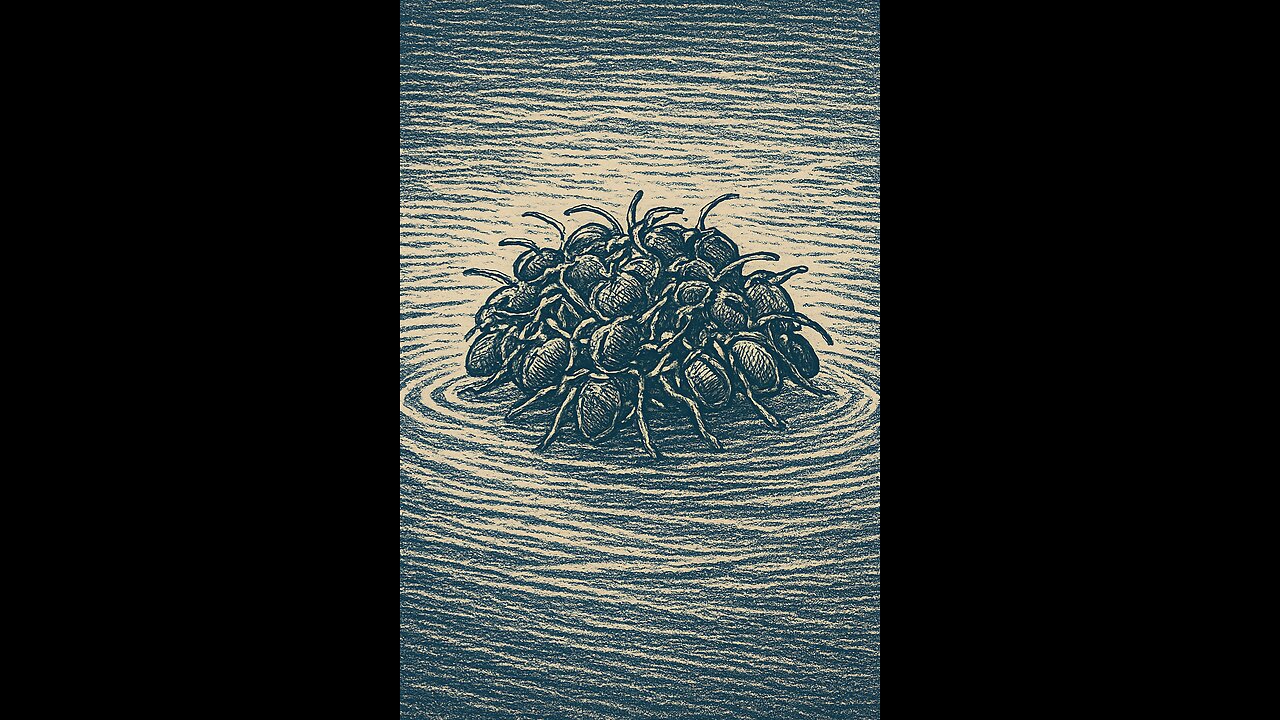Premium Only Content

Ant Rafting
Certain ant species, particularly Solenopsis invicta (fire ants), exhibit remarkable self-assembly behavior, forming living rafts and bridges from their own bodies through cooperative biomechanics and chemical communication.
When floodwaters rise, worker ants link their legs and mandibles together, guided by tactile cues and pheromones that trigger collective clinging behavior rather than individual escape.
Their exoskeletons are naturally hydrophobic, trapping air and increasing buoyancy, while the raft’s structure dynamically redistributes weight to keep the queen and brood at the center, dry and protected.
Similarly, when forming living bridges, ants sense gaps via tension and pheromone gradients, anchoring themselves to create stable passageways for the colony.
These emergent structures rely on local interactions and feedback loops—no single ant directs the process—demonstrating a form of distributed intelligence that allows colonies to adapt fluidly to changing environmental hazards.
-
 LIVE
LIVE
Barry Cunningham
3 hours agoPRESIDENT TRUMP INTERVIEW WITH MARIA BARTIROMO! THEN WE TALK MONEY AND OPPORTUNITY!
2,673 watching -
 3:44:08
3:44:08
SavageJayGatsby
6 hours ago🌊🐠 Subnautica: Nitrox Sunday 🐚💙
233K10 -
 24:34
24:34
HaileyJulia
9 days agoThis Christian Morning Routine Changed Everything for Me
12.2K3 -
 LIVE
LIVE
Putther
4 hours ago $3.02 earned🔴LAZY SUNDAY STREAM!! (GTA + MORE)
168 watching -
 30:13
30:13
Congressman Randy Fine
4 hours agoCongressman Fine Virtual Press Conference on the Democrat Shutdown
31.7K59 -
 LIVE
LIVE
GritsGG
6 hours agoQuads Into Ranked Top 30! Most Wins in WORLD! 3734+!
91 watching -
 53:29
53:29
Tactical Advisor
6 hours agoUnboxing New Guns | Vault Room Live Stream 042
114K10 -
 56:20
56:20
Steven Crowder
1 day agoEXPLAINED: Is America Headed For a Market Crash?
160K109 -
 LIVE
LIVE
S0lidJ
3 hours ago🟢Live -S0lidJ - This Game Is A Blast
29 watching -
 21:38
21:38
Professor Nez
7 hours agoHE'S BACK! Elon Musk EVISCERATES Biden Judge Over Big Balls Verdict
30.5K55